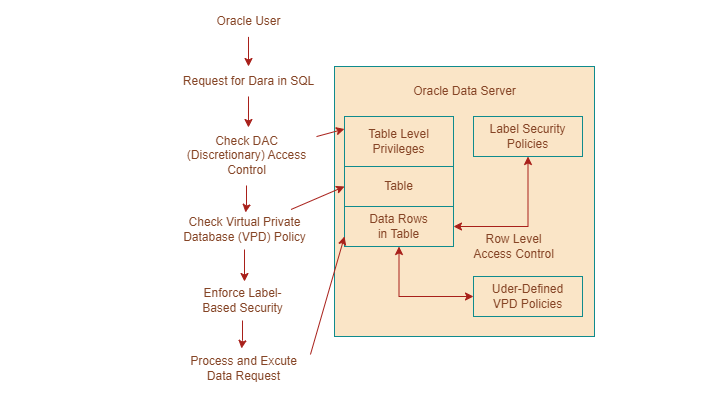
 Data Structure
Data Structure Networking
Networking RDBMS
RDBMS Operating System
Operating System Java
Java MS Excel
MS Excel iOS
iOS HTML
HTML CSS
CSS Android
Android Python
Python C Programming
C Programming C++
C++ C#
C# MongoDB
MongoDB MySQL
MySQL Javascript
Javascript PHP
PHP
- Selected Reading
- UPSC IAS Exams Notes
- Developer's Best Practices
- Questions and Answers
- Effective Resume Writing
- HR Interview Questions
- Computer Glossary
- Who is Who
Oracle Label-Based Security
Oracle Label-Based Security (OLS) is a feature of the Oracle Database that provides fine-grained access control over sensitive data based on security labels. This feature enables organizations to enforce access control policies based on the sensitivity of the data rather than the traditional approach of user roles and privileges. In this article, we will discuss how Oracle Label-Based Security works and its benefits.
Oracle Label-Based Security
Oracle Label-Based Security works by assigning a security label to each row of data in a table. The label identifies the sensitivity level of the data, such as confidential, secret, or top secret. Each user in the system is also assigned a label that represents their security clearance level. The database uses these labels to enforce access control policies and prevent unauthorized access to sensitive data.

To use Oracle Label-Based Security, the database administrator must first define the security labels and clearance levels. This involves creating a security policy that specifies the labels and clearance levels and associating it with the appropriate database tables. Once the security policy is in place. Users can access the data only if their clearance level is equal to or greater than the sensitivity level of the data they are trying to access.
Virtual Private Database (VPD) Technology
Oracle Label Security is built on the Virtual Private Database (VPD) technology delivered in the Oracle Database 11.1 Enterprise Edition. This section discusses how VPD adds predicates to user statements and provides server-enforced, fine-grained access control for a secure application.
Label Security Architecture
This section discusses the architecture of Oracle Label Security and how it works with the VPD technology. It illustrates how data is accessed and the sequence of DAC and label security checks.
How Data Labels and User Labels Work Together
In Oracle Label Security, both data and user labels play a crucial role in providing access control. This section delves into how these labels work together and how compartments and groups are used to identify the sensitivity of the labeled data.
Benefits of Oracle Label-Based Security
Fine-Grained Access Control
Oracle Label-Based Security provides fine-grained access control over sensitive data. With this feature, organizations can define access control policies based on the sensitivity of the data. It is a more effective approach than traditional role-based access control.
Regulatory Compliance
Many industries are subject to regulations that require strict control over sensitive data. Oracle Label-Based Security helps organizations comply with these regulations by providing a robust access control mechanism that is based on security labels.
Data Confidentiality
Oracle Label-Based Security helps protect data confidentiality by preventing unauthorized access to sensitive data. By assigning security labels to each row of data, the database ensures that only authorized users can access the data.
Centralized Administration
Oracle Label-Based Security enables centralized administration of access control policies. This makes it easier for database administrators to manage access control policies and ensure that they are enforced consistently across the organization.
Conclusion
Oracle Label-Based Security is a powerful feature of the Oracle Database that provides fine-grained access control over sensitive data. By assigning security labels to each row of data, the database ensures that only authorized users can access the data. This feature is especially useful for organizations. That needs to comply with regulatory requirements or have strict data confidentiality requirements. With Oracle Label-Based Security, organizations can enforce access control policies based on the sensitivity of the data and ensure that only authorized users can access the data.

